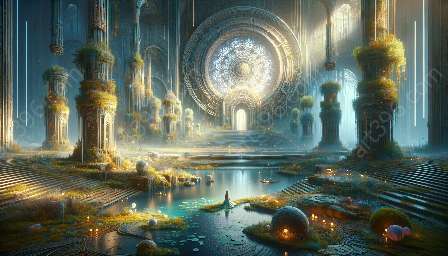Concept art plays a crucial role in defining the atmosphere and mood of video games, shaping the visual identity of game worlds and characters. It serves as the foundation for the entire artistic direction of a game, influencing everything from level design to character development and world-building.
Understanding the Impact of Concept Art
Concept art acts as a visual blueprint, providing a roadmap for the creative teams involved in game development. It sets the tone for the overall aesthetic and narrative direction, guiding the development of environments, architecture, and visual elements that contribute to the atmosphere and mood of the game.
With each stroke of the artist’s brush or pixel on the digital canvas, concept art breathes life into the game world, evoking specific emotions and immersing players in a richly detailed and cohesive virtual environment.
Shaping the Atmosphere and Mood
Game developers and designers use concept art to create unique and compelling atmospheres that define the emotional experience of the players. Whether it's a post-apocalyptic wasteland or a whimsical fantasy realm, the concept art sets the stage, establishing the visual and emotional tone that players will encounter throughout their gaming journey.
From the lighting and color palette to the architectural style and environmental elements, concept art infuses the game with a distinct mood, influencing the player's perception and response to the virtual world they inhabit.
Enhancing Immersion and Engagement
By leveraging concept art, game developers enhance the immersive quality of their games, drawing players into rich and believable worlds. The artistry and attention to detail in concept art contribute to the overall sense of presence, making the game environments feel tangible and engrossing.
Additionally, the emotional resonance and thematic coherence achieved through concept art captivate players, fostering a deeper connection to the game world and its inhabitants. This emotional engagement heightens the overall gaming experience, leaving a lasting impression on the players.
Evolution of Concept Art in Video Games
Concept art has continually evolved alongside advancements in technology, allowing for greater intricacy and fidelity in the visual representation of game worlds. With the advent of high-definition graphics and immersive virtual reality experiences, concept art has adapted to push the boundaries of creativity and narrative expression.
Artists and designers now have the tools to create concept art that not only defines the atmosphere and mood but also fuels the storytelling and player experience. This evolution has led to concept art becoming an indispensable component in the development of groundbreaking and emotionally resonant games.
Conclusion
Concept art serves as the cornerstone of a game's visual identity, shaping the atmosphere and mood to immerse players in compelling and evocative virtual worlds. By understanding the pivotal role of concept art in defining the emotional and aesthetic aspects of video games, developers can harness its power to craft truly captivating and unforgettable gaming experiences.

